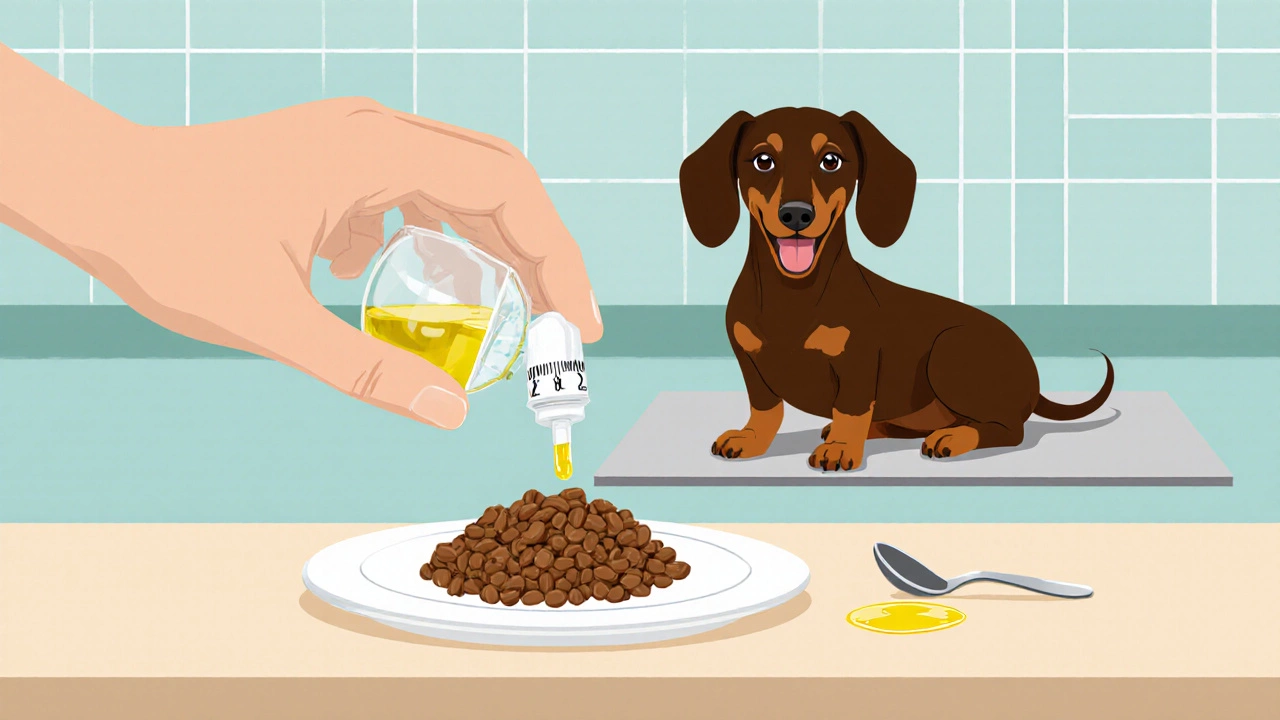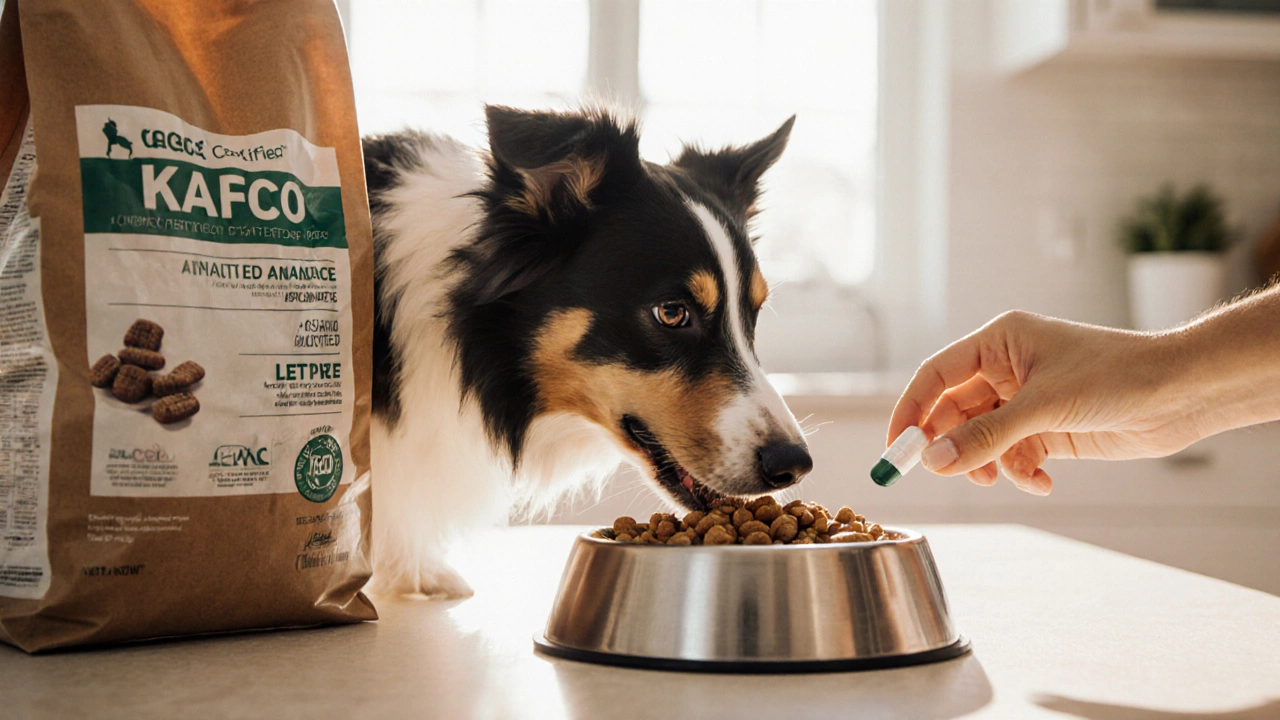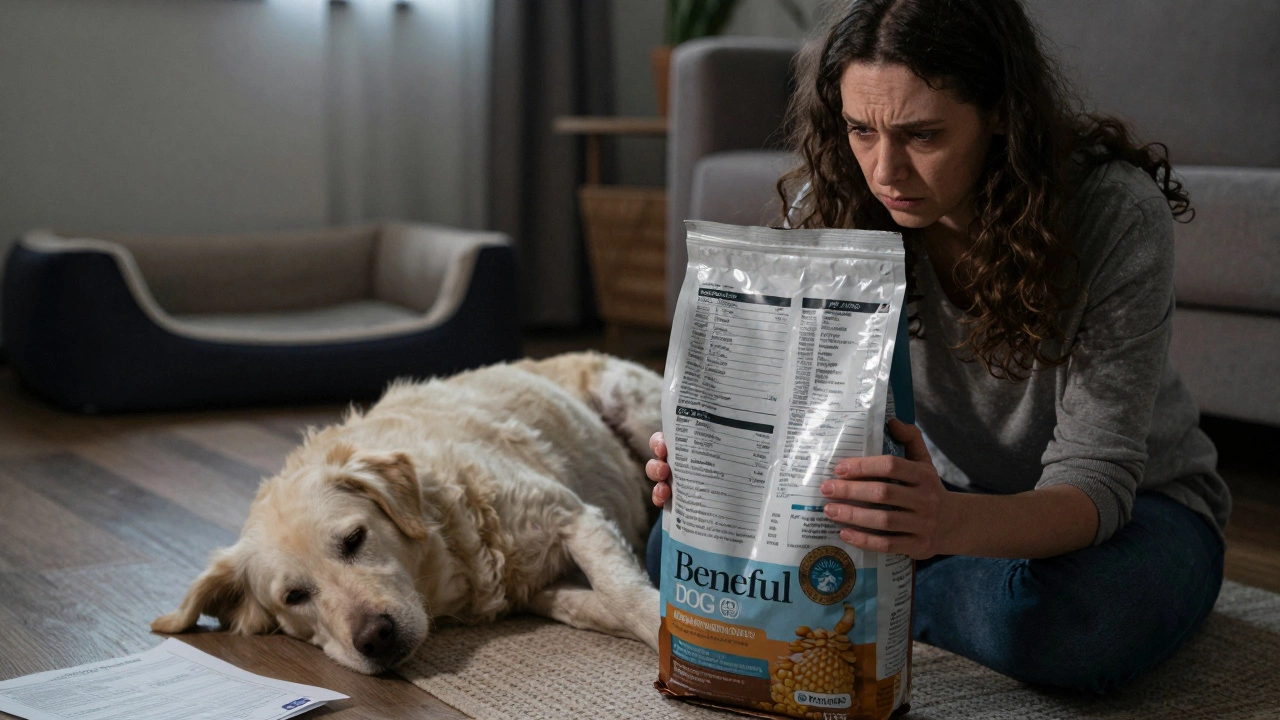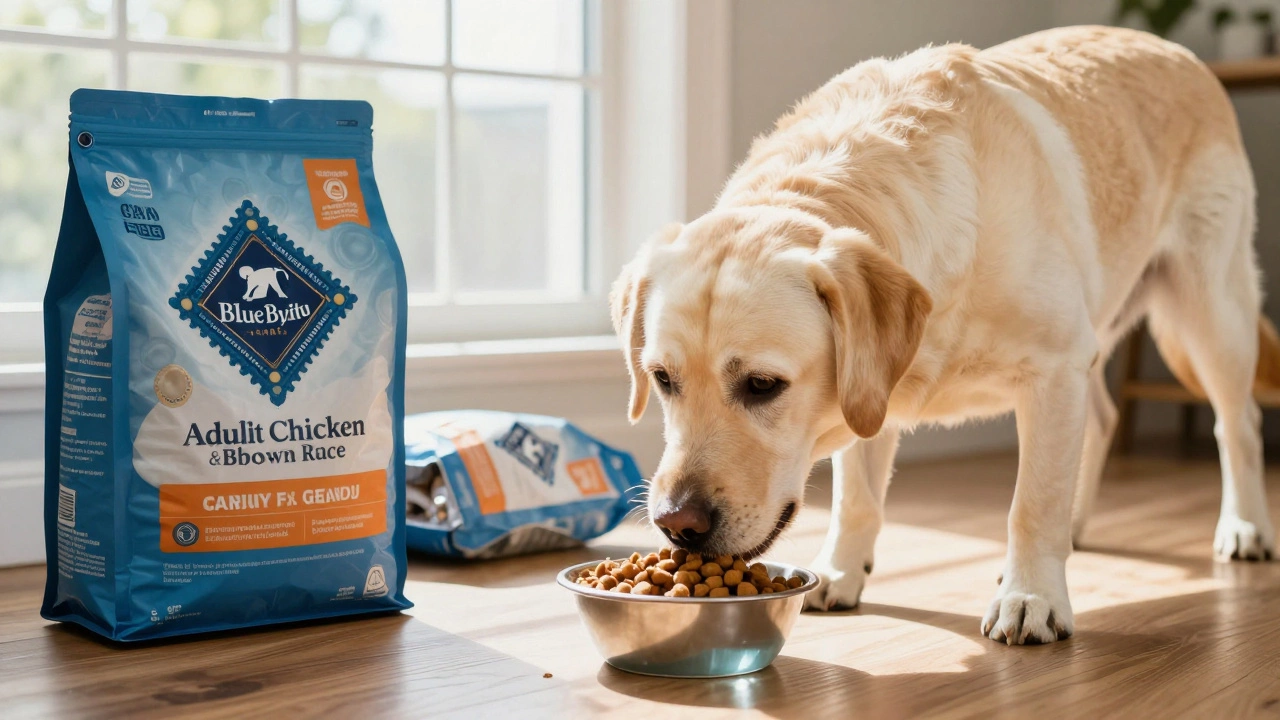Olive Oil vs Fish Oil Dosage Calculator
Recommended Oil Type
Key Benefits
Dosage Information
- Always consult your veterinarian before starting any supplement regimen.
- Start with smaller doses and gradually increase.
- Use high-quality, third-party tested oils.
- Monitor your dog for any adverse reactions.
Feeling torn between pouring a splash of olive oil or a few drops of fish oil into your dog's bowl? You’re not alone. Pet parents often wonder which oil packs the biggest punch for a healthy coat, smooth joints, and a happy pup. This guide breaks down the science, the benefits, the risks, and the practical steps so you can decide with confidence.
Key Takeaways
- Both olive oil and fish oil supply healthy fats, but fish oil is richer in EPA/DHA omega‑3s that directly support skin, coat, and joint health.
- Olive oil offers monounsaturated fats and antioxidants, making it a good occasional supplement for heart health.
- Start with low doses, monitor your dog’s reaction, and always check with a veterinarian before adding any oil.
- Choosing the right oil depends on your dog’s age, size, health goals, and any existing medical conditions.
Olive oil is a plant‑derived oil rich in monounsaturated fatty acids and polyphenol antioxidants. It’s been a staple in Mediterranean diets for centuries and has gained a reputation for supporting cardiovascular health. In the canine world, it’s praised for its mild flavor and easy digestion.
Fish oil is an animal‑derived oil abundant in omega‑3 fatty acids EPA and DHA. Those two acids are the heavy lifters when it comes to reducing inflammation, improving skin and coat shine, and supporting joint flexibility.
So, which one should you reach for? Let’s dig into the nutrient profiles.
What’s Inside These Oils?
Understanding the building blocks helps you match the oil to your dog’s needs.
Omega‑3 fatty acids are essential polyunsaturated fats that the body cannot make on its own. They come in three main forms: ALA (alpha‑linolenic acid), EPA (eicosapentaenoic acid), and DHA (docosahexaenoic acid). Dogs can convert ALA into EPA/DHA, but the conversion rate is low-often under 10%.
Olive oil supplies mostly ALA and a high amount of oleic acid (a monounsaturated fat). Fish oil, on the other hand, delivers EPA and DHA directly, meaning your dog gets the anti‑inflammatory benefits without relying on conversion.
Benefits for Your Dog
Both oils can improve health, but they shine in different areas.
Skin and Coat Health
Many owners notice a shinier coat and reduced itching after adding fish oil for dogs to the diet. EPA/DHA help calm inflammatory skin conditions like allergies and hot spots. Olive oil’s antioxidants also support skin health, but the effect is subtler.
Joint and Mobility Support
Joint issues affect dogs of all ages, especially large breeds. EPA and DHA have been shown in veterinary studies to reduce joint inflammation and improve range of motion. Olive oil provides some anti‑oxidant protection, yet it doesn’t target joint inflammation as directly.
Heart and Brain Function
Monounsaturated fats in olive oil can aid heart health by lowering bad cholesterol. Meanwhile, DHA is a key component of brain tissue, supporting cognition in senior dogs. If your senior pooch shows signs of memory lapses, fish oil may be the better choice.
Digestive Health
Both oils act as mild laxatives when introduced gradually, helping with constipation. However, too much oil can cause loose stools, so dosage matters.

How to Choose the Right Oil for Your Dog
Ask yourself these quick questions:
- Is your primary goal a shinier coat or calmer skin? → Fish oil scores higher.
- Do you want a heart‑healthy boost with a neutral taste? → Olive oil fits.
- Is your dog a puppy, adult, or senior? Seniors often benefit more from EPA/DHA for joint and brain health.
- Any known medical conditions (pancreatitis, gallbladder disease, bleeding disorders)? → Talk to a veterinarian before adding any oil.
When in doubt, start with a small amount of fish oil and monitor the results. You can always add a drizzle of olive oil later for added antioxidants.
Dosage Guidelines and Safety
Precision matters. Over‑supplementing can lead to weight gain, greasy fur, or digestive upset.
| Oil Type | EPA/DHA Content | Typical Daily Dose | Key Benefits | Potential Risks |
|---|---|---|---|---|
| Olive oil | 0% EPA, 0% DHA (mostly ALA) | ½ tsp per 10lb (≈0.5ml) - up to 1tsp for larger dogs | Heart health, antioxidant support | Weight gain, mild diarrhea if over‑done |
| Fish oil | EPA≈180mg/g, DHA≈120mg/g | 250mg EPA+DHA per 20lb (≈1ml); adjust for size | Skin/coat, joint, brain, anti‑inflammatory | Blood thinning, fishy breath, occasional stool changes |
Always use a high‑quality, third‑party‑tested oil that’s free of heavy metals and PCBs. For fish oil, look for “purified salmon oil” or “anchovy oil” with a guaranteed EPA/DHA level.
Common Mistakes and Red Flags
- Giving too much at once. Jumping from a tablespoon to a full spoon can overwhelm the gut.
- Skipping a gradual introduction. Start with a few drops mixed into wet food for 5‑7 days before reaching full dose.
- Using low‑grade oils. Cheap oils may contain rancid fats that cause oxidative stress.
- Ignoring pre‑existing conditions. Dogs with pancreatitis or gallbladder disease should avoid high‑fat supplements unless prescribed.

Practical Tips for Adding Oil to Your Dog’s Diet
- Measure with a small medicine dropper or a calibrated spoon.
- Mix into warm (not hot) wet food or a small amount of plain yogurt.
- Observe your dog for 24‑48hours: watch stool consistency, energy levels, and coat sheen.
- Keep a journal. Note dose, type of oil, and any visible changes.
- Rotate oils seasonally if you enjoy both. For instance, use olive oil in winter for heart health and fish oil in spring/summer for coat maintenance.
When to Call the Veterinarian
If you notice any of these signs, pause the supplement and schedule a check‑up:
- Persistent diarrhea or vomiting.
- Sudden weight loss or gain.
- Bleeding tendencies (e.g., bruises, nosebleeds) - especially relevant for fish oil’s blood‑thinning effect.
- Severe skin reactions or worsening itching.
A vet can run blood work to ensure liver and pancreatic function are normal and may suggest a tailored dose based on your dog’s specific needs.
Bottom Line
If your dog’s main concerns are a dull coat, joint squeaks, or cognitive decline, fish oil for dogs is the front‑runner because of its direct EPA/DHA supply. Olive oil is a solid secondary option for overall heart health and antioxidant boost, especially when used occasionally.
The smartest approach is to treat each oil as a targeted supplement rather than a one‑size‑fits‑all treat. Start low, watch closely, and keep the vet in the loop.
Frequently Asked Questions
Can I give my dog both olive oil and fish oil together?
Yes, many owners combine a small daily dose of olive oil for heart health with fish oil for skin and joint benefits. Keep the total fat intake under 5% of your dog’s daily calories to avoid weight gain.
How long does it take to see improvements in my dog’s coat?
Most dogs show a noticeable shine within 3‑4 weeks of consistent fish oil supplementation, provided the dosage is correct and the oil is fresh.
Is extra virgin olive oil better than regular olive oil?
Extra virgin olive oil retains more polyphenols and antioxidants, making it the preferred choice for canine use. Just ensure it’s cold‑pressed and free from additives.
Can fish oil cause a fishy smell on my dog’s breath?
A mild fishy breath can occur, especially with higher doses. Brushing your dog’s teeth regularly and using a high‑quality purified oil can minimize the odor.
My dog is overweight-should I still use these oils?
Both oils add calories, so keep portions tiny and incorporate them into a weight‑controlled diet. In some cases, a vet may recommend a specific omega‑3 supplement formulated for weight‑managed dogs.








